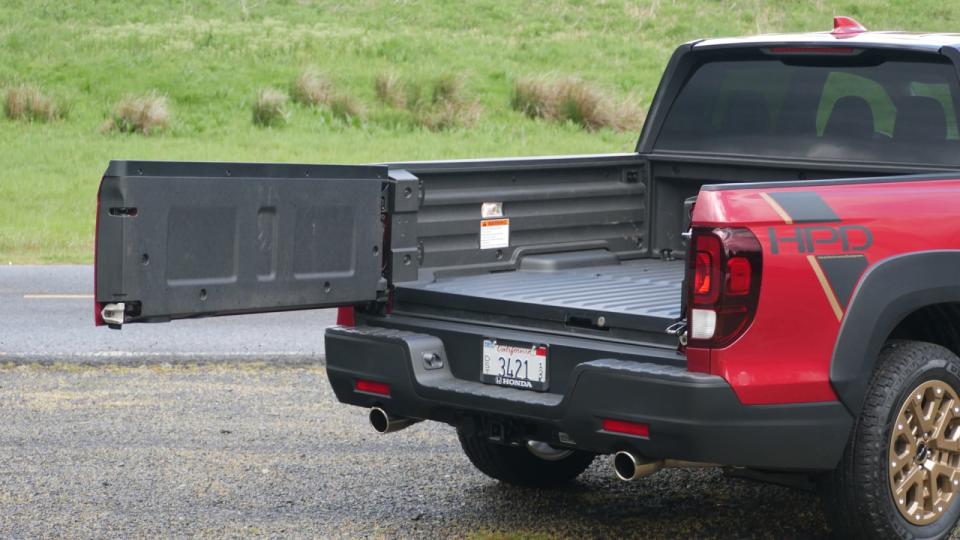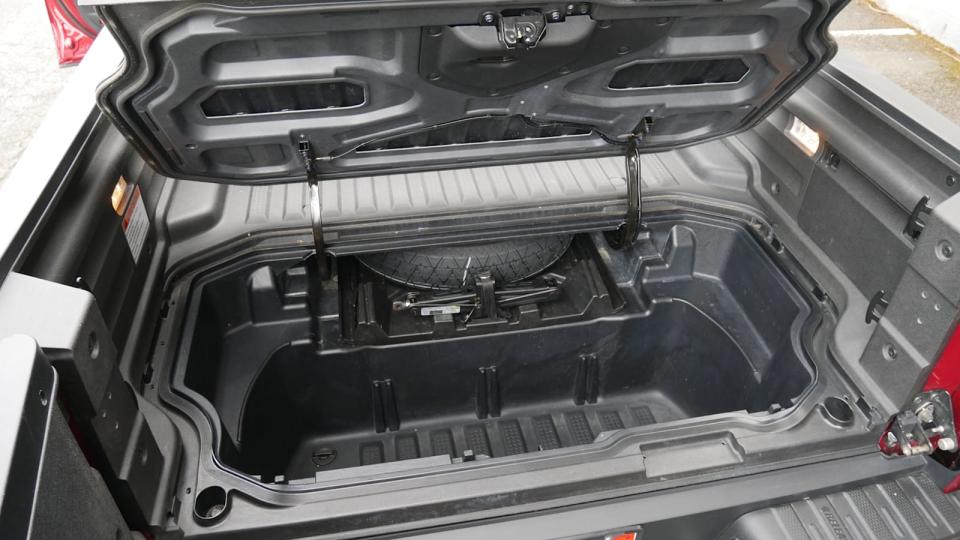2023 Honda Ridgeline Review: It might be all the truck you need

Pros: Great on-road ride and handling; innovative bed design; standard AWD
Cons: Controversial design; no inexpensive base models; limited off-road
The Honda Ridgeline brought something totally new and different to the pickup segment before other unibody trucks like the Hyundai Santa Cruz and Ford Maverick hit the market. Despite those other crossover-based trucks being on sale now, the 2023 Honda Ridgeline still offers a unique proposition as the only midsize unibody pickup out there. Its lovely road manners may be matched and bested by the Hyundai, but the larger Honda offers significantly more utility and space. Plus, its advantages over others in the highly-competitive midsize truck space remain.
No midsize pickup rides and comports itself better on the road than the Ridgeline, making it this truck’s biggest selling point. Most trucks give off the rough-and-tumble vibes when cruising around town, but in the Ridgeline, it’s so SUV-like that you may as well be driving a Honda Pilot with a bed (because that's basically what it is). The Ridgeline’s innovative swing-out tailgate tech continues to be a segment-exclusive feature — we loved it on our long-term Ridgeline test truck. Its interior doesn’t try to overwhelm with rugged, tough-looking styling. Instead, it’s similar to the family-oriented SUVs from Honda, remaining pleasantly ergonomic and full of storage/cubbies. If there’s a low point to be found, it’s the tech inside the Ridgeline. Honda updated this pickup for 2021, but the infotainment and driver assistance tech is still disappointing at best. As for the powertrain, we like the standard 3.5-liter V6 for its throaty growl and solid power, but wish it offered better fuel efficiency.
For many use cases, the Ridgeline and its 5,000-pound towing capacity is going to be all the truck you need. Its all-wheel-drive system is even acceptably capable off-road, so don’t write it off when the going gets tough. In most day-to-day use cases, you’re going to be grateful to be driving the comfy, friendly Ridgeline over other midsize pickups.
Interior & Technology | Passenger & Cargo Space | Performance & Fuel Economy
What it's like to drive | Pricing & Trim Levels | Crash Ratings & Safety Features
What's new for 2023?
Honda refreshed the Ridgeline for the 2021 model year, but there are no major changes made for the 2023 model year truck.



What are the Ridgeline’s interior and in-car technology like?
For better and for worse, the Ridgeline interior is copied and pasted from the Honda Pilot from the B-pillars forward. That means it's not an especially attractive space, and certainly not one that screams "tough, fun truck!” That's the "for worse" bit. For better, the Pilot interior offers exceptional small item storage, and that basically carries over to the Ridgeline unchanged. The roomy covered center bin is especially handy for keeping even sizable items away from prying eyes or from flying around the cabin.
But now, back to the worse bit. The Pilot/Passport/Ridgeline's infotainment system is the interior's weakest attribute. Yes, it has a volume knob now, but that's just correcting an old misstep. It doesn't change the missteps that remain: a convoluted menu structure, rudimentary navigation system (if so equipped) and lack of physical supporting buttons.




How big is the Ridgeline?
On the outside, the Ridgeline is basically the same length and height as other midsize crew cab pickups. Its wheelbase isn't quite as long, and it has less ground clearance (7.6 inches), but it's notably wider – by a whopping 5.3 inches compared to the Ford Ranger. However, the Ridgeline's unibody "crossover" construction means these similar dimensions on the outside do not translate into similar measurements inside. Simply put, the Ridgeline cabin is far roomier and more comfortable for passengers. You can see this most in terms of rear seat legroom, and all that extra width results in a similar advantage in shoulder room. There's also the matter of interior height: There's more of it in the Ridgeline, meaning the seats can be higher off the ground (especially compared to the Toyota Tacoma), resulting in greater comfort even if headroom is similar.
Unlike most of the other midsize trucks, the Ridgeline does not offer a smaller, "extended cab" body style. There is also only one bed length, 5 feet 4 inches, which is consistent with the short beds that typically come standard with the crew cabs of other midsize pickups (it's also much longer than the cargo areas of midsize SUVs). The Tacoma and Frontier can be paired with a longer bed; the Ranger and newly-redesigned Colorado cannot.
None of those competitors, however, offers the unique attributes of the Ridgeline's bed. That starts with the clever Dual Action tailgate, which drops down like normal or swings out like a door. The latter is helpful for climbing into the bed or leaning in to get something, and it also provides access to the Ridgeline's other unique feature: a trunk. This water-tight 7.9-cubic-foot space fit three medium-sized pieces of luggage in our luggage test and has a plug in the bottom to let you wash it out or fill it with ice to create a gigantic onboard cooler. Just know that it takes a lot of ice to do it. Finally, the top two trim levels feature the Truck-Bed Audio System, which basically turns the bed into a giant speaker. It's pretty cool.
What are the Ridgeline’s fuel economy and performance specs?
The Ridgeline sure keeps things simple by offering only one powertrain and drivetrain combination: a 3.5-liter V6 that sends 280 horsepower and 262 pound-feet of torque through a nine-speed automatic to a torque-vectoring all-wheel-drive system. You want rear-wheel drive? Too bad, the Ridgeline is based on a front-wheel-drive platform. You want front-wheel drive? No, of course you don't. You aren't alone, Honda discontinued that option with its 2021 refresh
EPA-estimated fuel economy is 18 mpg city, 24 mpg highway and 21 mpg combined. Considering the crossover architecture, nine-speed automatic and Honda's reputation, you'll probably be surprised to hear that combined estimate is actually 1 mpg worse than a Ford Ranger 4x4 and the same as a Ford F-150 4x4 with the 2.7-liter turbo V6.


 Yahoo Autos
Yahoo Autos 

